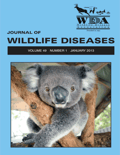
JOURNAL OF WILDLIFE DISEASES
Scope & Guideline
Unraveling the complexities of wildlife health challenges.
Introduction
Aims and Scopes
- Wildlife Disease Epidemiology:
The journal emphasizes studies that analyze the spread, impact, and control of diseases in wildlife populations, highlighting the importance of understanding disease dynamics in relation to ecological and environmental factors. - Zoonotic Disease Surveillance:
Research focused on zoonotic diseases—those that can be transmitted from wildlife to humans—is a significant area of interest, providing insights into public health risks associated with wildlife. - Pathobiology and Clinical Studies:
The journal publishes findings related to the pathology of diseases affecting wildlife, including clinical case studies that explore diagnostic challenges and treatment responses. - Conservation Medicine:
Articles often address the intersection of wildlife health and conservation, exploring how disease impacts species survival and ecosystem health, thereby informing conservation strategies. - Wildlife Health Assessment Techniques:
Methodological advancements in assessing wildlife health, including biochemical and hematological evaluations, are a core focus, enhancing the ability to monitor and manage wildlife health effectively. - Ecological and Environmental Influences on Wildlife Health:
Research examining how ecological factors, such as habitat alteration and climate change, influence disease prevalence and wildlife health is a recurring theme, linking environmental science with wildlife health.
Trending and Emerging
- Integrative One Health Approaches:
There is a significant trend towards integrating One Health concepts, which emphasize the interconnectedness of human, animal, and environmental health, in studying wildlife diseases. - Genomic and Molecular Pathogen Detection:
Recent publications highlight advancements in genomic and molecular techniques for pathogen detection, allowing for more precise identification and understanding of wildlife diseases at the molecular level. - Impact of Climate Change on Wildlife Health:
Research focusing on how climate change affects wildlife health and disease dynamics is gaining traction, indicating a growing recognition of the need to address environmental changes in wildlife disease studies. - Anthropogenic Effects on Wildlife Disease Dynamics:
Emerging studies are increasingly examining how human activities, such as urbanization and agricultural practices, influence wildlife disease patterns, providing insights for better management and mitigation strategies. - Ethical Considerations in Wildlife Management:
There is a rising interest in the ethical dimensions of wildlife management and conservation, particularly regarding the implications of disease management strategies on animal welfare and ecosystem integrity.
Declining or Waning
- Traditional Pathogen Surveillance:
There has been a noticeable decrease in studies solely focused on traditional pathogen surveillance without integrating ecological or environmental contexts, as the field increasingly emphasizes a more holistic approach to wildlife health. - Invasive Species Impact Studies:
Research specifically addressing the impacts of invasive species on wildlife health appears to be diminishing, possibly due to a shift toward broader ecological studies that encompass multiple factors affecting wildlife. - Historical Disease Documentation:
While historical perspectives on wildlife diseases are important, fewer papers are being published that solely document past disease occurrences without contributing new insights or methodologies.
Similar Journals

California Fish and Wildlife Journal
Exploring the Depths of California's Aquatic and Terrestrial WondersCalifornia Fish and Wildlife Journal, published by the California Department of Fish and Wildlife, is a pivotal platform dedicated to advancing the understanding of fish and wildlife management and conservation. As an open access journal, it fosters collaboration and knowledge sharing among researchers, practitioners, and students interested in aquatic and terrestrial ecosystems. With a focus on empirical research, policy implications, and innovative conservation strategies, the journal plays a crucial role in informing both scientific communities and decision-makers alike. Researchers seeking to contribute to critical discussions on sustainability, habitat preservation, and biodiversity will find this journal an essential resource. The journal’s commitment to disseminating knowledge about California's rich natural resources enhances its stature in the field of wildlife management and conservation studies.
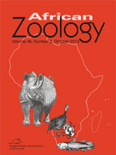
AFRICAN ZOOLOGY
Fostering Insights into Ecosystem DynamicsAFRICAN ZOOLOGY, published by Taylor & Francis Ltd, stands as a significant journal in the realm of Animal Science and Zoology, with a proud history dating back to 1996 and slated to continue until 2024. With an ISSN of 1562-7020 and E-ISSN 2224-073X, this journal provides a reputable platform for researchers and practitioners dedicated to the study of animal biology across the African continent. It has been recognized for its quality scholarship, evidenced by its Q3 categorization in the 2023 Scopus quartile rankings and an impressive rank of #182 out of 490 within its field. As an open-access journal, it facilitates the dissemination of vital research findings and promotes broader accessibility, catering to a diverse audience of professionals, scholars, and students alike. The journal aims to enhance our understanding of wildlife, conservation, and ecosystem dynamics in Africa, fostering collaborations that address critical ecological challenges. For researchers and enthusiasts keen on contributing to and staying informed about advancements in zoological science, AFRICAN ZOOLOGY is an essential resource that enriches the global discourse on biodiversity and conservation efforts.

CALIFORNIA FISH AND GAME
Fostering Knowledge for a Sustainable FutureCalifornia Fish and Game is a prominent journal dedicated to the fields of Animal Science and Aquatic Science, published by the California Fish and Game Editor. With its roots extending back to 1979, the journal has served as a vital platform for disseminating research focused on the wildlife and aquatic ecosystems of California and beyond. Recognized within the Q4 quartile for both Animal Science and Zoology and Aquatic Science, it provides critical insights and scholarly contributions, despite its comparative rankings within the respective categories. The journal, with an ISSN of 0008-1078 and an E-ISSN of 2331-0405, offers an invaluable resource for researchers, professionals, and students alike, looking to deepen their understanding of California's rich biodiversity and ecological challenges. For those interested in open access options, further details can be reviewed through the journal's platform. By fostering a community of inquiry, California Fish and Game plays an essential role in advancing knowledge and conservation efforts in the fields of interest.
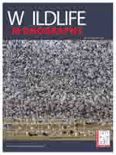
WILDLIFE MONOGRAPHS
Advancing wildlife conservation through rigorous research.WILDLIFE MONOGRAPHS, published by WILEY, is a prestigious journal dedicated to advancing the understanding of ecological and biological sciences with a keen focus on wildlife conservation and management. With an ISSN of 0084-0173 and an E-ISSN of 1938-5455, this journal has established itself as a leader in its field, ranking in the Q1 quartile for both Ecology, Evolution, Behavior and Systematics and Nature and Landscape Conservation in 2023. The journal's remarkable impact is underscored by its Scopus rankings—46th out of 721 in Agricultural and Biological Sciences and 17th out of 211 in Environmental Science, highlighting the journal's influential role in shaping research discussions and policy in wildlife management. Available in print and online, WILDLIFE MONOGRAPHS publishes comprehensive studies that inform practitioners, researchers, and students alike, fostering a deeper insight into biodiversity and ecosystem dynamics. Founded in 1981, the journal continues to evolve, contributing significantly to the scientific community through rigorous peer-reviewed articles that bridge the gap between theory and practical application in wildlife management.
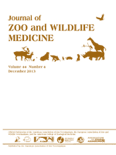
JOURNAL OF ZOO AND WILDLIFE MEDICINE
Connecting professionals for the care of wild species.JOURNAL OF ZOO AND WILDLIFE MEDICINE, published by the American Association of Zoo Veterinarians, serves as a pivotal resource in the field of veterinary science, focusing specifically on the health and well-being of zoo and wildlife species. With an ISSN of 1042-7260 and an E-ISSN of 1937-2825, this journal is recognized for its significant contributions to animal science and has been categorized in the second quartile in both Animal Science and Zoology, as well as Veterinary disciplines, according to the latest rankings. It holds a respectable position within Scopus, being ranked #91 in General Veterinary and #290 in Animal Science and Zoology. While the journal operates on a subscription basis, its impactful research articles have been invaluable for clinicians, researchers, and students alike, providing crucial insights that advance wildlife conservation, veterinary practices, and animal health care from 1993 to the present. With a global reach and a targeted focus on both theoretical and practical applications, JOURNAL OF ZOO AND WILDLIFE MEDICINE is instrumental in fostering collaboration among professionals dedicated to the study and care of wild animal populations.

PESQUISA VETERINARIA BRASILEIRA
Connecting researchers to elevate animal health.PESQUISA VETERINARIA BRASILEIRA is a premier scholarly journal that serves as a vital platform for disseminating high-quality research in the field of veterinary sciences. Published by REVISTA PESQUISA VETERINARIA BRASILEIRA, this Open Access journal has been a beacon of knowledge since 1997, allowing global access to its valuable content and fostering collaboration among researchers, professionals, and students. With an ISSN of 0100-736X and an E-ISSN of 1678-5150, it stands out for its commitment to enhancing the understanding of veterinary practices, animal health, and public health implications in the context of Brazil and beyond. As of 2023, it holds a Q3 category in veterinary miscellaneous and ranks at the 43rd percentile according to Scopus, reflecting its growing influence and contribution to the veterinary community. Based in Seropédica, Rio de Janeiro, this journal publishes research covering a wide range of topics, aiming to facilitate knowledge exchange and drive innovation within the field. Join the conversation and contribute to the advancement of veterinary science through your submissions and readership.
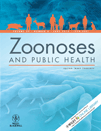
Zoonoses and Public Health
Exploring the vital connections between animals and human health.Zoonoses and Public Health is a leading peer-reviewed journal published by WILEY, based in Germany. Focused on the intersection of wildlife, domestic animal, and human health, the journal addresses critical issues concerning zoonotic diseases, their impact on public health, and strategies for prevention and control. With an impressive impact factor reflecting its significance, the journal ranks in the Q2 category across multiple fields, including Epidemiology, Public Health, and Infectious Diseases, underscoring its pivotal role in advancing research in these vital areas. As it converges from 2007 to 2024, Zoonoses and Public Health is committed to fostering interdisciplinary collaboration and publishing high-quality research that informs policy and practice. Researchers, professionals, and students alike can access vital insights through its open access options, making it an indispensable resource for anyone invested in understanding and mitigating the effects of zoonoses on public health.
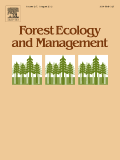
FOREST ECOLOGY AND MANAGEMENT
Navigating the Future of Forest ManagementFOREST ECOLOGY AND MANAGEMENT is a premier peer-reviewed journal dedicated to the integral study of forest ecosystems and their management, published by Elsevier in the Netherlands. With an impactful presence in the field, this journal boasts a prestigious Q1 ranking in multiple categories, including Forestry, Management, Monitoring, Policy and Law, and Nature and Landscape Conservation as of 2023. It addresses key issues relevant to sustainable forest practices, conservation strategies, and environmental monitoring, making it a vital resource for researchers, practitioners, and policymakers alike. The journal is indexed with an impressive Scopus rank, placing it among the top tier of titles in Agricultural and Biological Sciences and Environmental Science. While it does not offer Open Access options, its rigorous review process and high visibility make it essential for those seeking to stay abreast of the latest findings and trends in forest ecology and management. Published continuously since 1976, FOREST ECOLOGY AND MANAGEMENT aims to foster interdisciplinary collaboration and advance knowledge critical to the stewardship of forest resources in an ever-changing global landscape.

Human-Wildlife Interactions
Bridging the Gap Between Humans and Nature for a Sustainable Tomorrow.Human-Wildlife Interactions, published by the JACK H BERRYMAN INST, is a leading open-access journal dedicated to the critical study and understanding of the complex relationships between humans and wildlife. Launched in 2007, the journal has become a pivotal platform for researchers, practitioners, and students in the fields of ecology and conservation. It is based in the heart of ecological research at Utah State University, bringing together diverse perspectives that illuminate both the challenges and solutions associated with wildlife interactions. With an impact factor reflected in its respectable Q3 ranking in Ecology and Nature and Landscape Conservation, it demonstrates a solid contribution to these scientific domains. Researchers exploring innovative conservation strategies, wildlife management practices, and the socio-economic impacts of wildlife are encouraged to submit their studies, enhancing the journal's role in fostering dialogue and advancing knowledge in this vital area of environmental science. Accessible to a global audience, Human-Wildlife Interactions continues to promote scholarly discourse in a way that supports the sustainable coexistence of people and wildlife in our shared environments.
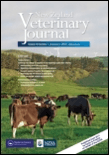
NEW ZEALAND VETERINARY JOURNAL
Driving excellence in veterinary research and education.NEW ZEALAND VETERINARY JOURNAL, published by Taylor & Francis Ltd, stands as a pivotal platform in the realm of veterinary science, contributing significantly to the global discourse on animal health and welfare since its inception in 1952. With an ISSN of 0048-0169 and an E-ISSN of 1176-0710, this journal offers invaluable insights within both the veterinary and general medical fields, currently achieving a commendable Q2 ranking in Veterinary (miscellaneous) and Q3 in Medicine (miscellaneous) for 2023. Its Scopus ranking places it in the 76th percentile among veterinary journals, affirming its high-impact presence in academia. While access to this journal is not open, it maintains an essential role for researchers, professionals, and students aiming to advance their knowledge and contribute to the field of veterinary science. With a commitment to disseminating quality research, NEW ZEALAND VETERINARY JOURNAL enriches the understanding of veterinary practices and enhances ongoing dialogue on critical health issues affecting animals, promoting better outcomes through scientific inquiry.